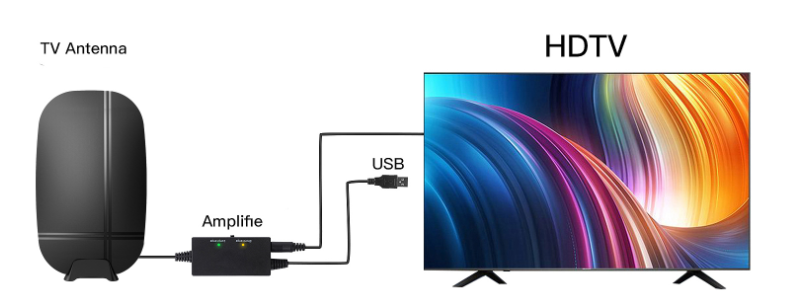Working Principle and Application of Television Antennas
Everyone is familiar with television antennas. I remember that the old-fashioned black and white TV used to come with its own antenna and later developed into outdoor pole TV antennas. But so far, television antenna technology has further matured, and the current antennas can greatly meet our daily needs. However, many people buy antennas home but do not understand the antenna, the working principle of the antenna, and the installation location. Today, I will give you a detailed explanation about TV antennas, hoping to help everyone.

1、 Working principle and function of antenna
As an indispensable part of wireless communication, the basic function of antennas is to radiate and receive radio waves. When transmitting, convert high-frequency current into electromagnetic waves; When receiving, the electrical wave is converted into high-frequency current.
2、 Classification of antennas
There are various types of antennas, mainly classified in the following ways: base station antennas and mobile portable antennas can be divided into ultra long wave, long wave, medium wave, short wave, ultra short wave, and microwave according to their working frequency band; According to its direction, it can be divided into omnidirectional and directional antenna
3、 Gain of antenna
Gain is one of the main indicators of an antenna, which is the product of directional coefficient and efficiency, and is a manifestation of the size of the antenna's radiation or received radio waves. The choice of gain size depends on the requirements of the system design for the radio wave coverage area. In brief, under the same conditions, the higher the gain, the farther the radio propagation travels. Generally, the base station antenna uses a high gain antenna, while the mobile station antenna uses a low gain antenna.
4、 How to select an antenna
As an important component of communication systems, the performance of antennas directly affects the indicators of the communication system. When selecting antennas, users must first pay attention to their performance. Specifically, there are two aspects: the first is to choose the antenna type; The second choice is the electrical performance of the antenna. The significance of choosing an antenna type is: whether the directional pattern of the selected antenna meets the requirements for radio wave coverage in system design; The requirements for selecting the electrical performance of an antenna are: whether the electrical indicators such as frequency bandwidth, gain, and rated power of the antenna meet the system design requirements. Therefore, it is best for users to contact the manufacturer for consultation when selecting antennas.





